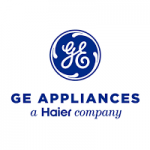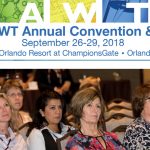Tech Bulletin #8: Recommendations for Building Water System Safety During Periods of Low Usage
As the COVID-19 pandemic spreads across the country, how we look at and operate retail, entertainment, commercial, institutional, and hospitality facilities is rapidly changing. As the need for social distancing increases and shelter in place orders are put into place, our facilities are immediately affected by a decreased demand for HVAC and potable water system use. This creates a near immediate concern for both accelerated corrosion in HVAC systems and legionella, the waterborne bacteria responsible for Legionnaire’s Disease. Expounded by the prospect that reduced occupancy and demand of our systems will likely persist even after lifting of more strict guidelines, action must be taken to protect the water side of your critical systems and prevent conditions for the growth of harmful bacteria, such as legionella.
Given that commercial grade systems were engineered with the intent of moving thousands of gallons per day and could now be reduced to a fraction of normal capacity or even total shut down, every facility affected should have a modified water safety plan.
How could these conditions negatively affect my systems? Stagnation reduces incoming disinfectant levels that municipalities add before entering your facility. It also increases or reduces temperature to ambient levels, providing the ideal conditions for biofilm growth and microbiologically induced corrosion.
What systems are typically affected? Primary distribution systems and associated piping, hot and cold-water storage tanks, hot water heaters, showerheads, faucets, ice machines, swimming pools, hot tubs, decorative fountains, cooling towers, and more…
What are the long-term consequences? Once a biofilm forms, it can be difficult to remove from a water system by the standard disinfectant source alone, and remediation can be costly and invasive. Persistent biological growth can lead to health and safety concerns surrounding legionella and biological fouling and corrosion of capital assets.
How can you prepare for operating safely during this slowdown? Managers and Engineers should take these proactive steps to ensure continued water safety and quality throughout their facility.
- Conduct an inventory of your facility’s equipment and systems.
- How many potable hot water recirculating zones are there?
- Does my facility utilize steam, hot/chilled water, and/or cooling towers which are seeing decreased use?
- Is my facility fully shut down and fall into layup recommendations, or are we merely at reduced use?
- What equipment was recommended to be shut down due to decreased use, and will that affect the long-term life?
- What external factors, such as decreased flow through the water main, may affect my building as well?
- Once you have a firm understanding of your facility’s unique characteristics, the following broad recommendations can be applied to most facilities and systems.
HVAC/Non-Potable Water Considerations:
- Supply chain and labor shortages should be expected; thus any necessary chemistry (towers, boilers, loops) should be in stock and near point of use. We currently recommend a 6-8 week supply with a 4 week inventory reorder point.
- For dual temperature systems, postpone the switch from heating to cooling as long as possible if there is not a full staff to react to uncovered problems.
- Steam boiler systems under low use should be laid up if not used for more than one week.
- Cooling tower water must not sit idle. A plan must be in place to recirculate water and add biocide daily. If not feasible, these systems should be recirculated with a layup chemical and drained.
Domestic/Potable Water Considerations:
- All buildings should be on high alert for legionella as decreased water usage creates temporary dead legs.
- Flushes should be performed routinely on all hot and cold-water fixtures.
- All flushes must be logged and documented.
- Weekly flushes are recommended at a minimum.
- Hot water heaters should not have any changes to temperatures which lower below 140 degrees or disconnections in water recirculation unless there is a plan upon restart.
- Any hot water heaters taken offline must have a pasteurization procedure upon startup.
- Document that the domestic water quality is at a safe level of disinfectant before returning to service, critical control points and corrective actions available upon request per specific water quality. If feasible, recommend documenting disinfectant level during proactive flushes during slowdown.
- All water features should be drained, laid up in accordance to any specifications, disinfected, and filters cleaned.
- Disconnect water supply to auxiliary devices such as water fountains, coffee makers, refrigerators, ice machines, or similar devices. Filters should be removed from any devices if used. Prior to recommissioning, units must be cleaned, disinfected, and filters installed.
GWT recommends that every facility comply with ASHRAE Standard 188 and have a Water Management Program. A properly modeled plan should account for many of these proactive.
For additional information, please reach out to one of our representatives at 708-349-9991 or info@gwt-inc.com







